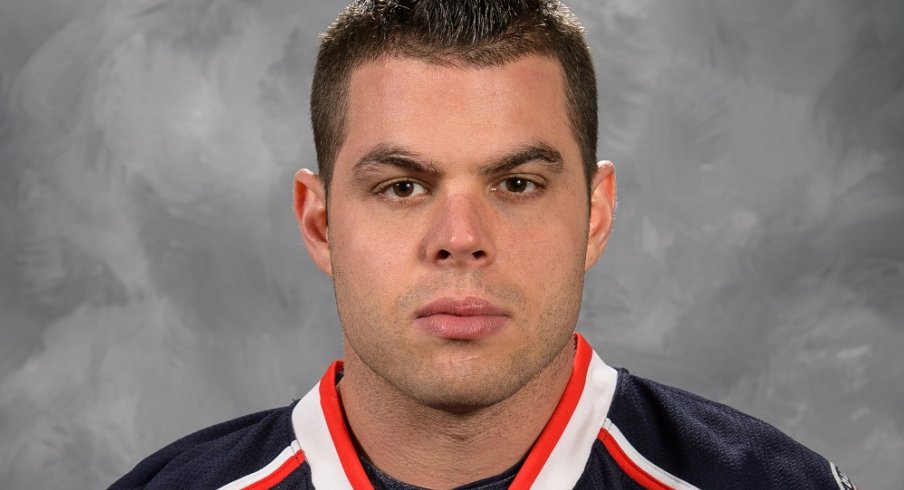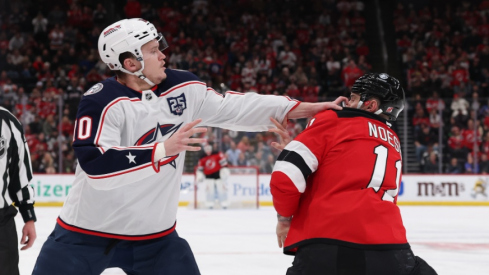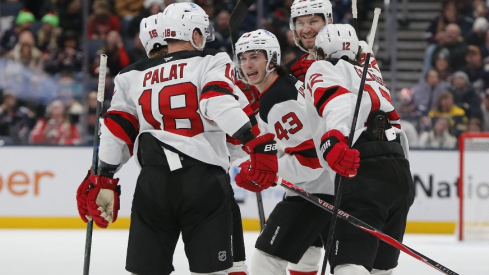July 5, 2013, was supposed to be a joyous day in Blue Jackets history.
With the announcement that Columbus had signed forward Nathan Horton to a seven-year, $37.1 million contract, Blue Jackets fans rejoiced. Just months after Jeff Carter had forced his way out of town after making Columbus feel like the NHL's version of Siberia, a legitimate high-level free agent had signed a deal to come to town when he could have signed with 29 other teams.
To many, with the Blue Jackets coming off a stunning late-season run to within a tiebreaker of a playoff spot, it felt like a move that could push the team into legitimate contention.
We all know that is not what happened.
Wednesday, the last vestiges of the Horton deal were purged from the organization when David Clarkson – or more accurately his contract – was part of the package that went to the Vegas Golden Knights in exchange for the NHL's newest team drafting William Karlsson in the expansion draft.
In fact, to the Jackets, the Clarkson contract was likely a key to the deal. Giving up a first-round pick in next week's draft and a second-rounder in 2019 was a stiff price to pay to keep Josh Anderson or Jack Johnson over Karlsson, but the cap relief Columbus will get as it tries to upgrade its roster made the move worth it.
Suffice it to say, this is not how it was supposed to end.
Horton had come to Columbus as not exactly a superstar but a legitimate power forward at the NHL level, one who had a Stanley Cup ring and was a consistent goal scorer in the hard areas. He had topped 20 goals every season from 2006-11 and was still averaging almost 25 goals per 82 games in his final two seasons in Boston when he inked the deal with the Jackets.
There were injury concerns, sure, but this was a marquee deal for a team that didn't have a long history of luring prime free agents to Nationwide Arena. The team had always had respected veterans, players like Michael Peca and Anson Carter, at the ends of their careers, but this was perhaps the best free agent in the class proclaiming Columbus was the place to be. Added to a young team that had Brandon Dubinsky, Nick Foligno, Jack Johnson, Artem Anisimov, Cam Atkinson, David Savard, Sergei Bobrovsky, Matt Calvert and Ryan Johansen all at age 26 or younger, Horton figured to be a veteran presence that solidified a playoff-ready roster.
The Jackets would in fact make the playoffs the next year, but Horton's on-ice presence wasn't a key reason. The team knew he'd miss the beginning of the campaign while rehabbing a shoulder injury, but he was robbed of postseason play by a groin injury. His final account for the season included 36 games, five goals and 14 assists for 19 points.
Little did anyone know those would be his only appearances in union blue. Horton hurt his back during offseason training the next summer and would never suit up again in an NHL game. It was a devastating injury for both player and team, which did not insure Horton's contract and was left on the hook having to pay him more than $5 million per year to do nothing.
Which is where David Clarkson came into the equation. The thought was that as long as Columbus had to pay someone more than $5 million per year, they might as well have that player on the ice, even if that player was Clarkson, whose expensive contract and declining production had made him seem untradeable to many. A 30-goal scorer in 2011-12 in New Jersey, Clarkson signed a seven-year deal worth nearly $37 million with Toronto at the same time Horton signed with Columbus but fell well short of expectations, delivering 15 goals and 11 assists in a season and a half.
Moreover, he became a scapegoat among Toronto fans, who saw Clarkson as the on-ice representation for the team's bumbling front office. The situation was essentially toxic, so contract was traded for contract on Feb. 26, 2015, with both teams well out of playoff contention. Toronto received some salary cap relief because of Horton's status on long-term injured reserve, while Columbus received a player who in theory could suit up and contribute.
Except that plan backfired as well as Clarkson proved to be about as injury-prone as Horton. He played just three games for Columbus the rest of that season, then chipped in two goals and two assists in 23 games in 2015-16 before his season and then career ended because of his own back injury.
While NHL salary cap rules when it comes to injury relief are somewhat convoluted, the crux of trading Clarkson to Vegas is that it allows the Golden Knights – who as a new team aren't up against the cap quite like the Jackets are – to make sure they get to the salary floor while Columbus does receive cap relief, an important factor as the team tries to re-sign forwards Alexander Wennberg and Anderson and also acquire help up front.
So that's the arc of history. For signing Horton four years ago, Columbus received exactly seven goals and 16 assists in 62 games between him and Clarkson. Many millions of dollars were paid, and to finally get out from the whole thing, a first-round pick was dealt this week among other considerations.
This obviously wasn't Horton's fault, Clarkson's fault, or anyone's fault, really. Despite what the clichés will tell you, not everything happens for a reason. Sometimes, they just happen and all one can do is roll with the punches.
Four years after signing Nathan Horton, the Blue Jackets have built themselves into a legitimate contender. It's just an unfortunate reality that the progress has come in spite of Horton's contract than because of it.
Follow 1st Ohio BatteryFacebook, Twitter, Instagram and YouTube


